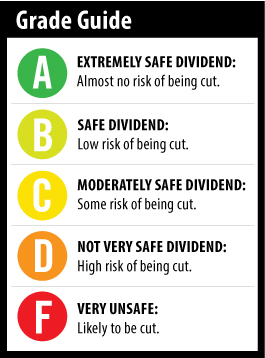 In the comments section of last week’s Safety Net Column, Duane asked me to take a look at Intel (Nasdaq: INTC) as he is concerned the company did not raise the dividend for the fifth quarter in a row.
In the comments section of last week’s Safety Net Column, Duane asked me to take a look at Intel (Nasdaq: INTC) as he is concerned the company did not raise the dividend for the fifth quarter in a row.
Intel is an active recommendation in The Oxford Income Letter and I wrote about it in last week’s Oxford Income Weekly (the weekly update that all Oxford Income Letter subscribers receive).
[ad#Google Adsense 336×280-IA]In that report, I mentioned second quarter earnings and revenue were lower than last year and Wall Street now expects revenue for 2013 to decline from last year – even though management said it expects low single-digit growth.
So there is potential for upside if the results just hit management’s target.
But what really has Intel investors worried is the fact that it did not raise the dividend this quarter, as many expected.
It was the fifth straight quarter that Intel paid a dividend of $0.23.
The last dividend raise, in August of 2012, took place after four quarters at $0.21.
The raise before that was after just two quarters. So investors were expecting another increase this month and they did not get it. After all, a dividend raise every four quarters (every year) feels like a schedule that’s predictable and makes sense.
Some on Wall Street have said that with Intel’s underwhelming results, it would have been irresponsible for the company to raise the dividend.
I disagree. As you’ll see, Intel still makes plenty of cash that would allow it to raise the dividend.
Last quarter, Intel generated $4.7 billion in cash flow from operations and spent $2.7 billion in capital expenditures, giving it $2 billion in free cash flow.
Free cash flow is calculated by subtracting capital expenditures from cash flow from operations. It is the most conservative cash flow number as it takes into account how much money the company is spending to invest in the infrastructure of its business after cash flow from operations.
Intel paid $1.1 billion in dividends in the second quarter against $2 billion in free cash flow for a payout ratio of 55%. In other words, Intel paid out $0.55 in dividends for every dollar of free cash flow.
My general rule of thumb is that I like to see a payout ratio of 75% or lower. That tells me that even if the company has a rough quarter or year, its dividend can easily be paid and even raised.
So if in a somewhat weak quarter, Intel still creates more than enough cash to pay (and even raise) the dividend, I’m not at all concerned about the safety of the company’s dividend.
As I mentioned in The Oxford Income Weekly, I will be very surprised if Intel does not raise the dividend in the next quarter or two.
Even if it doesn’t, it’s hard to imagine the company cutting the dividend when it still makes so much cash.
If you have a stock whose dividend safety you’d like me to take a look at, leave the ticker symbol in the comments section below.
Dividend Safety Rating: A
 — Marc Lichtenfeld
— Marc Lichtenfeld
[ad#wyatt-income]
Source: Wealthy Retirement
